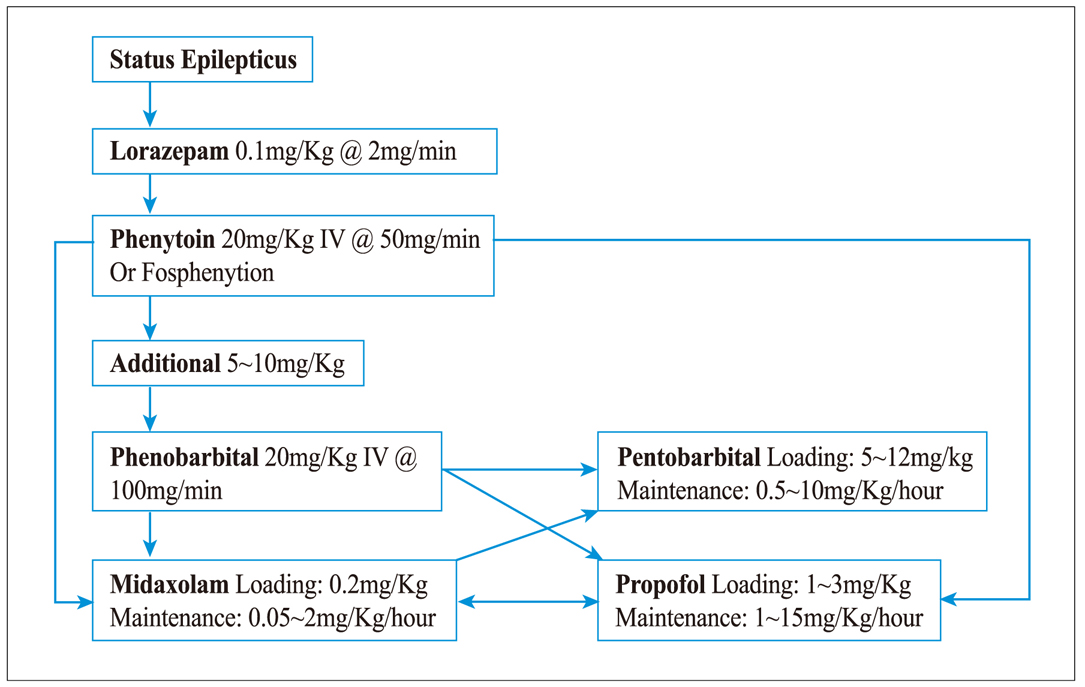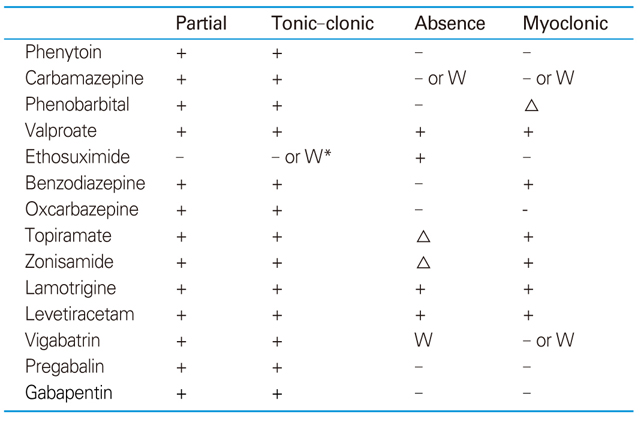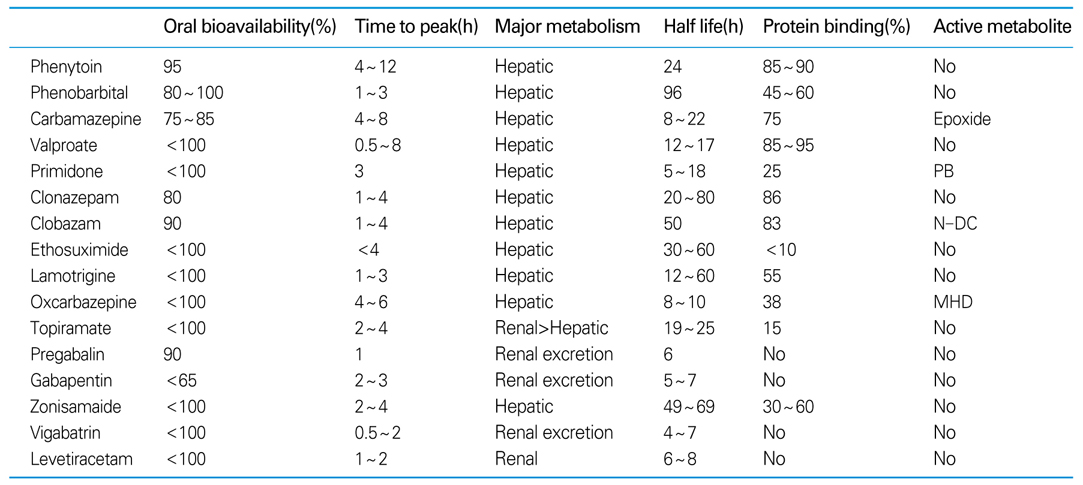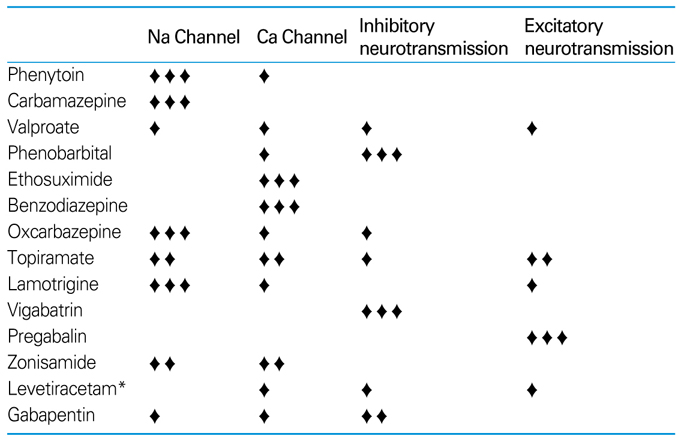 |
 |
- Search
| J Korean Med Assoc > Volume 50(7); 2007 > Article |
Abstract
Epilepsy is a common and disabling disorder with a protracted course. Medical therapy is the keystone for the treatment of epilepsy. Most patients with more than one well-documented non-provoked seizures require prophylactic antiepileptic treatment. Those with underlying structural abnormalities or other risk factors should probably be treated after a single seizure. The goal of treatment should be the maintenance of normal life, avoidance of seizure-related brain or physical injuries including sudden unexpected death of epileptic patients. Nearly two-thirds of patients are well controlled on a single antiepileptic drug. If the first or second monotherapy improves control of seizure but does not produce seizure freedom, an antiepileptic drug with a different or multiple mechanisms can be added. Strategies for the choice of initial antiepileptic drug or combining drugs should involve the assessment of individual patient-related factors, including seizure types and epilepsy syndrome and pharmacology of antiepileptic drugs. The impact of adverse effects of antiepileptic drugs should not be underestimated. The introduction of many new antiepileptic drugs has provided a wider choice for patients and doctors.
References
1. McCorry D, Chadwick D, Marson A. Current drug treatment of epilepsy in adults. Lancet Neurol 2004;3:729-735.
2. Perruca E, Gram L, Avanzini D, Dulac O. Antiepileptic drugs as a cause of worsening seizures. Epilepsia 1998;39:5-17.
3. Berg AT, Shinnar S. The risk of seizure recurrence following a first unprovoked seizure: a quantitative review. Neurology 1991;41:965-972.
4. Kwan P, Brodie MJ. Early identification of refractory epilepsy. N Engl J Med 2000;34:314-319.
5. In: Engel J, Pedley TA, editor. Epilepsy: A Comprehensive Textbook 1997;Philadelphia: Lippincott-Raven Publishers. 1275-1284.
6. Shorvon S. Handbook of Epilepsy Treatment 2005;Malden: Blackwell Publishing.
7. Levy RH, Mattson RH, Meldrum BS, Perruca E. Antiepileptic Drugs 2002;5th ed. Philadelphia: Lippincott Williams & Wilkins.
- TOOLS
-
METRICS

-
- 5 Crossref
- Scopus
- 1,380 View
- 6 Download
-
Related articles in
J Korean Med Assoc -
Recent Advance in Antiepileptic1998 June;41(6)
New antidiabetic Drug1999 June;42(6)
Pharmacological Treatment with New Antiepileptic Drugs2001 June;44(6)










